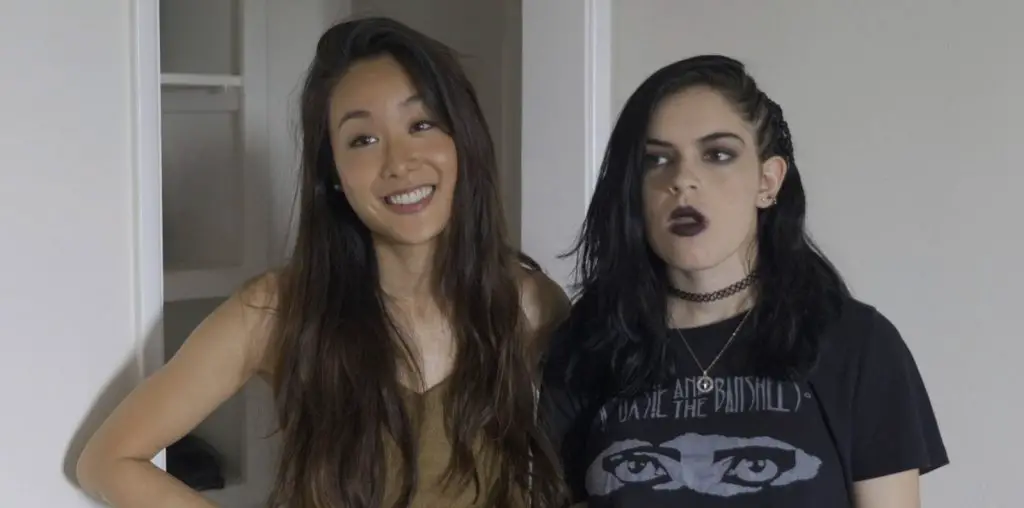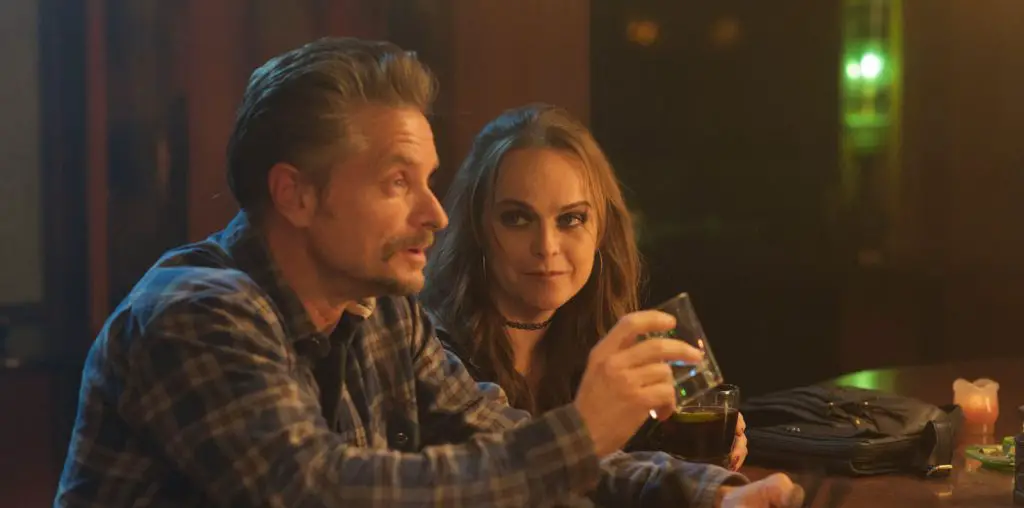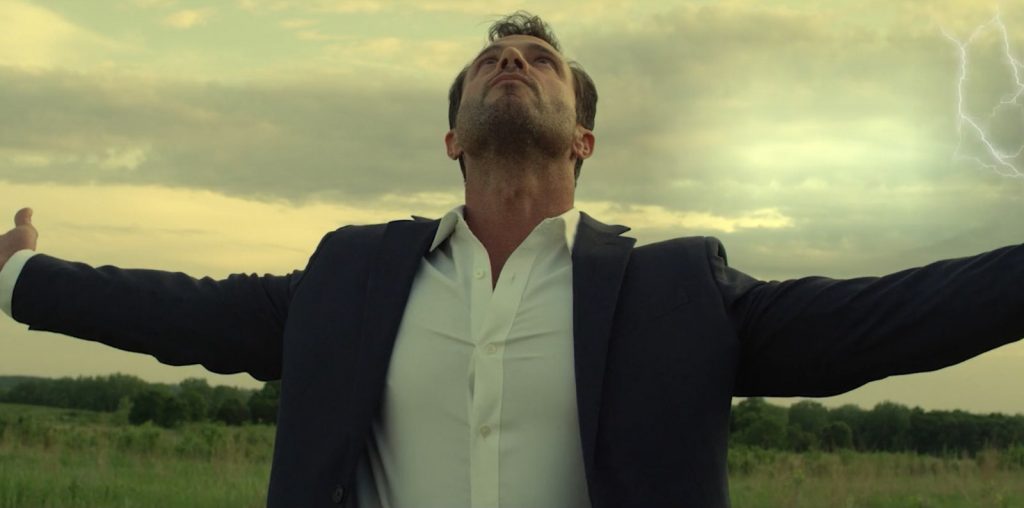
Blonde. Purple is in a subgenre of film of which I shall never grow tired: the bank-heist-gone-wrong thriller. I love them, from the top-tier flicks such as Kubrick’s The Killing, Peckinpah’s The Getaway, and Lumet’s Dog Day Afternoon to the less-grandiose outings such as Roger Avery’s Killing Zoe, Bill Murray’s Quick Change, and David Mamet’s Heist. There’s something about the study of human nature at the height of hubris and survival that is endlessly fascinating to me.
Writer/director Marcus Flemmings’ Blonde. Purple ticks all of the boxes in this subgenre. A morally conflicted lead lured by a “down and dirty” job? Check. A crew of sketchy criminals whose confidence may overshadow their abilities? Check. Back-to-the-wall negotiations in an effort to escape? Check.
With more than a passing tip-of-the-hat to Pulp Fiction, the action-thriller shuffles the narrative before dealing it to the audience. We begin moments following the job, with our lead Wyatt (Julian Moore-Cook) is exchanging words over the phone with a crisis negotiator. Since the job did not necessarily go as planned, Wyatt finds himself with a dead partner and a precocious teen (Ellie Bindman) as a hostage.
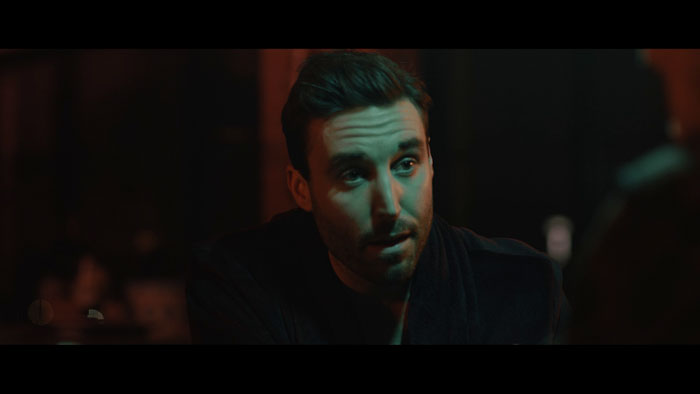
“….the job did not necessarily go as planned, Wyatt finds himself with a dead partner and…a hostage.”
Through several flashbacks, we glimpse how it all came about. We get comfortable with all the supporting players throughout the runtime as they are rotated in as the story requires. Fortunately, Flemmings has assembled a massively talented cast. From his leads Moore-Cook and Bindman to secondary characters, such as seasoned criminal (and apparent film scholar) Nath (Adam J. Bernard), femme fatale Saida (Jennifer Lee Moon), and mentally unstable Ant (Richard Sandling), everyone is provided time to shine. Unfortunately, the script gives the terrific cast far too much inconsequential dialogue that will make an excellent sizzle reel for the actors but hijacks any narrative momentum the filmmaker’s trying to build.
At one point in Blonde. Purple, Nath states, “Me and my old friend Sadie here are prattling. Not often you can just sit and chew the cud,” but within a runtime of more than two hours, it appears that the film has all the time to do just that. And the more it tackles topics such as the origin of the Screwdriver (the drink), sports, pets, the difference between a movie and a film, the less all these characters begin to feel human.
As amusing and sharp as some of the dialogue is, too much is irrelevant to the actual central plot. The film feels as though it’s in love with its own voice. Speaking of, Flemmings opted to set this in the States with an all-British cast. While the leads predominantly nail it, they are asked to deliver endless pages of dialogue; the Queen’s English will inevitably poke through from time to time.
Blonde. Purple is certainly worth viewing to witness some stellar turns from its leads. Plus, Flemmings’ Tarantino/Rtiche stylized affinity feels authentic. But padded to more than two hours and filled with Philosophy 101-style musings, the production fails to find a voice of its own. The director spins the narrative roulette wheel, breaking it up with title cards that clue us where the following scenes fit and finds a modicum of success.
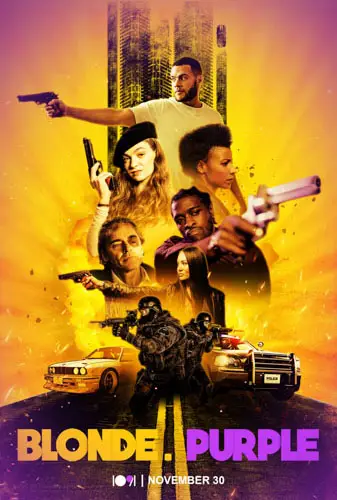
"…certainly worth viewing to witness some stellar turns from its leads."
